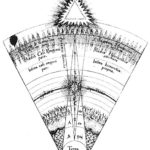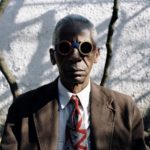The Embiggening: Day One

Follow @immunetoboredom on Twitter or check back here for updates throughout the Big Ears Festival. Share this widely if you please.
Day one is in the books<fn>Actually, it is still going on, but this boy is done.</fn>, so let’s recap.
Went to the opening remarks, which drew a standing room crowd at the Visit Knoxville listening room. Glad I went, as I was able to hear Anna & Elizabeth harmonize beautifully and to get a 15 minute master class demonstration from Bela Fleck, from raga to “Sound of Silence” to jazz standards to traditional breakdowns, the history of the banjo in a pair of hands.
But the first official concert was the International Contemporary Ensemble (ICE) performing “In the Light of Air” by Icelandic composer Anna Thorvaldsdottir. That this was performed by an ensemble called ICE was more than fitting. This music made cold palpable and, oddly enough, alluring. Five musicians – piano, harp, violin, percussion, and cello – created washes of sound, waves cascading over waves. The feeling of traveling on a boat, slowly, with great chunks of ice clanking against the hull, giving way to sunrise, and noonlight glimmering on water, to sunset, to chill nighttime, to another sunset.
The Mill & Mine hosted this show, and it was the perfect venue. The ensemble was arrayed on the floor, with the audience encircling the players. This configuration is where Mill & Mine shines. The warehouse resonates like the finest concert hall, with the added benefit of the audience sitting literally a few feet away from the musicians. The proximity is key to the transformative effects of the music. Not just transformative: transportive. The capacity crowd was transfixed for an hour, and likely could have taken an hour more.
Quickly from there to The Standard to hear Susan Alcorn redefine the parameters of the pedal steel guitar. She played a piece by Messiaen and two pieces by tango legend Astor Piazzola. The “Invierno porteno” – the Winter Tango – was devastating in its beauty. Alcorn has uncovered elements of the pedal steel that were hard to imagine, but that seem perfectly logical once you hear and see her work. Her original compositions – especially the one inspired by the sickness-inducing meal she got on a transatlantic flight – are little gems.
The i2b team spent a few minutes at the gorgeous Tennessee Theater listening to Marc Ribot and David Hidalgo. They delivered gritty blues and Latinx folk tunes, an affable pair of pickers who seemed more like they were on someone’s front porch than a theater stage. Good stuff, and the crowd loved.
A quick scamper back to Mill & Mine for a solo set from cellist Okkyung Lee. This was a take no prisoners event. Lee has all the chops you could ask for from a well-trained cellist, but she was not bringing that style. Scrapes, harmonics, low bleats, swirls of sounds: this is her bag, Ascension via cello, relentless and committed. At one point, her high register scrabblings began to sound like a Braxton or Roscoe Mitchell sopranino solo, complete with keypad tappings and the dog whinny yelps. Gorgeous work, exceptionally well received.

Dash across the railroad tracks, back to The Standard for a set by my pals Duet for Theremin and Lap Steel (D4T&LS). I have heard these guys dozens of times – and played with them a few – and I have never heard them better than tonight. At last, a sound system that can deliver what they intend, from delicate whisper to ground-rattling bottom to shimmering clouds of ambient float. They have two more appearances this weekend. Catch one or be sorry.
Finally, back to Mill & Mine for the sonic mayhem of Godspeed You! Black Emperor. I can think of several reasons to not like this performance – lack of rhythmic/tempo variety, overly simple composition and harmonic development chief among them. But I loved it. It was way, way, way fucking loud, a blast of feedback and howling from the 9-piece group. They know each other, and they know what they are trying to do: their music is an outgrowth of the Coltrane Ascension aesthetic, a headlong pursuit of transcendence through sheer sonic excess.
It’s easy to hear references to the great sonic explorers of rock – Hendrix, The Who, Led Zep, Floyd, and especially King Crimson – all of whom absorbed the Coltranian zeitgeist that transformed not just “jazz”, but rock-based seekers as well.
Both D4T&LS and Godspeed benefited from intelligently curated film imagery. Godspeed’s film technician really deserves full band member credit, his elaborate dance – managing four 8-mm projectors and a large spinning carousel of film loops to choose from – as much a part of the performance as anything else.
And speaking of film, there is an enormous film festival component to Big Ears. Can your intrepid correspondent find time for a moving picture show?
Stay tuned.




